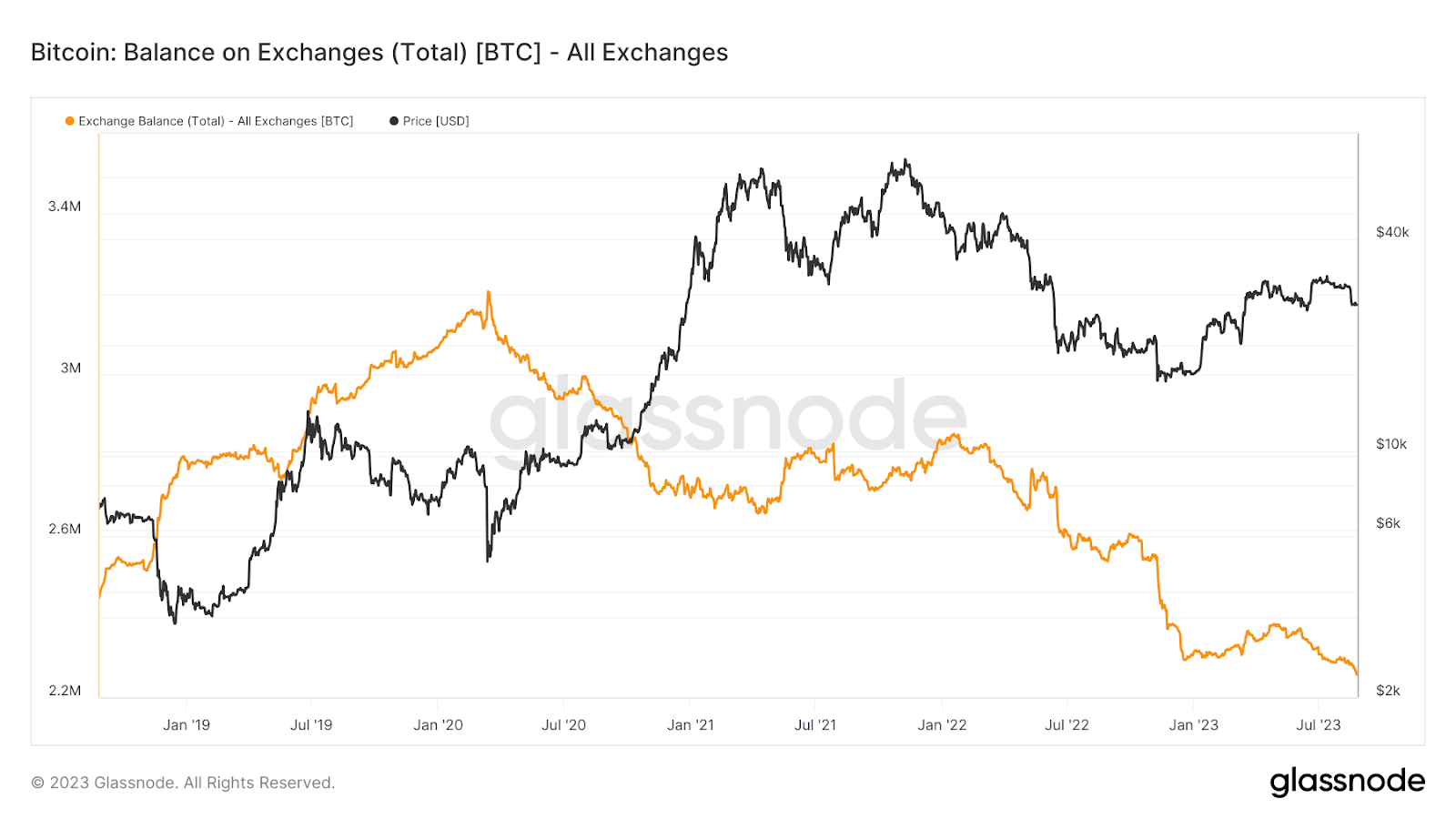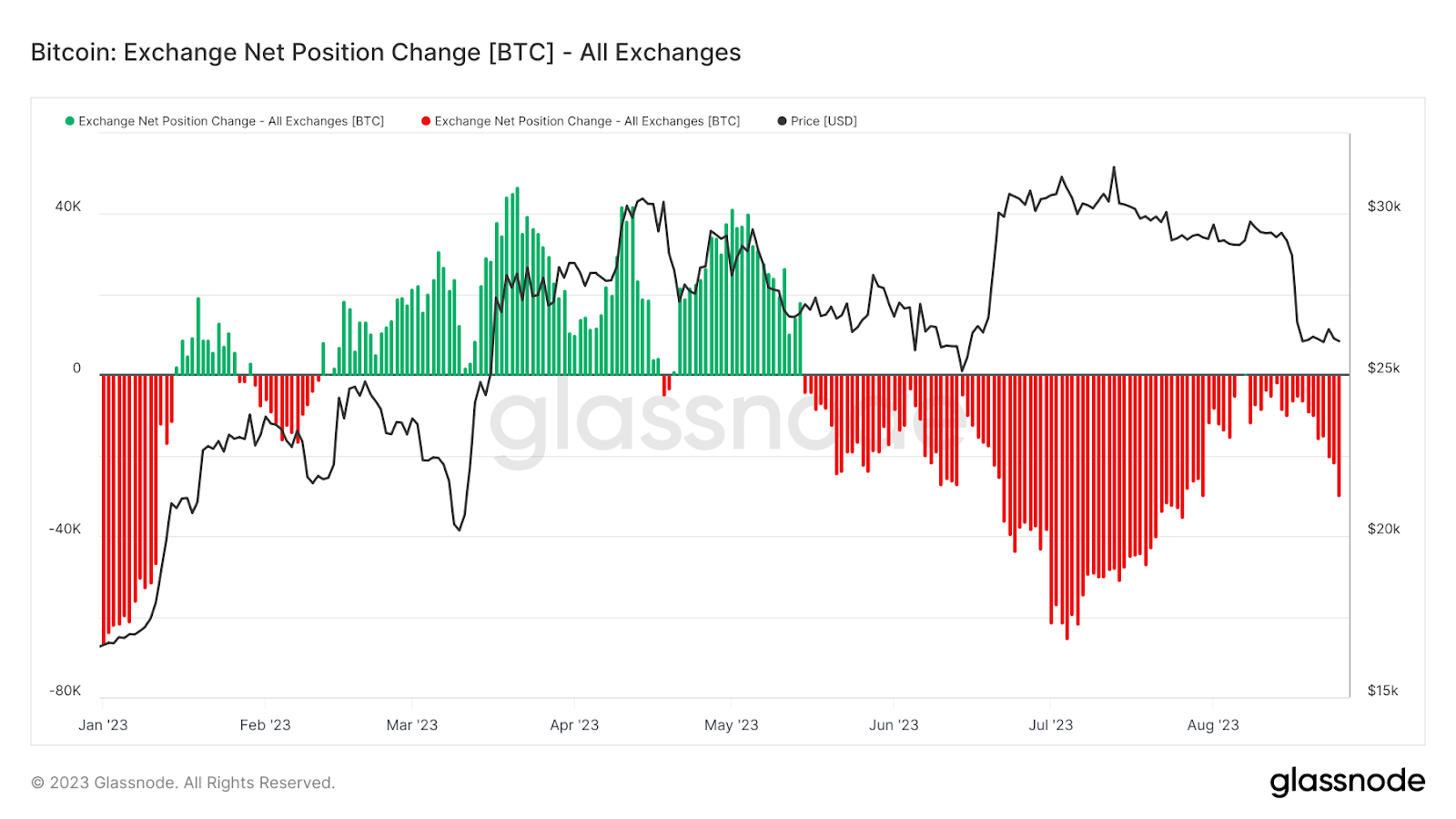- While fluctuations in the price of Bitcoin continue, there is a noticeable change in how it is traded on exchanges. Some are holding their assets while others are taking calculated steps.
- As of August 25, 2023, the total Bitcoin balance on all exchanges has dropped to its lowest level in five years, with 2,256,335 BTC worth $58.79 billion.
- The decrease in Bitcoin balances on exchanges may indicate the involvement of other active factors such as increasing institutional HODLing as the Halving approaches.
The decreasing balance of Bitcoin on exchanges and the increasing withdrawal activities can be of critical importance; A detailed examination of current metrics.
Important On-Chain Metrics for Bitcoin
While fluctuations in the price of Bitcoin continue, there is a noticeable change in how it is traded on exchanges. Some are holding their assets while others are taking calculated steps, all of which are happening against the backdrop of global economic factors and market predictions.
In this article, you will comprehensively understand the current Bitcoin landscape that has been analyzed through key chain metrics and market behaviors.
Today, the price of Bitcoin (BTC) is at $26,060 and did not experience a significant price movement over the weekend. Before the slow weekends, Bitcoin maintained a sideways trend throughout the week following the worst weekly drop of 12% since the FTX crash.
In a sideways trend, Bitcoin price movements fluctuate on shorter time frames as it receives blows from bulls and bears. The absence of clear momentum with long wicks and tails increases the chances of sharp reversals on both sides.
Bitcoin Exchange Balance: A Historical Perspective
As of August 25, 2023, the total Bitcoin balance on all exchanges has dropped to its lowest level in five years, with 2,256,335 BTC worth $58.79 billion. This is in complete contrast to the peak in March 2020 when exchanges held 3,207,431 BTC worth $19.21 billion.
This change in Bitcoin exchange balances can be analyzed in the context of broader economic landscape, such as rising inflation in the United States and the Federal Reserve’s repo rate policies.
In periods of low interest rates, traditional investments generally yield low returns. This directs investors towards alternative assets that offer higher returns with increased risk. Due to its decentralized structure and significant profit potential, Bitcoin has become an attractive option.
However, in the current period of high interest rates, traditional investments such as bonds become more attractive due to the perceived stability and guaranteed returns. This leads to a decrease in demand for volatile assets like Bitcoin.
Nevertheless, not everything is pessimistic. The decrease in Bitcoin balances on exchanges may indicate the involvement of other active factors such as increasing institutional HODLing as the Halving approaches.
Exchange Net Position Change
The “Exchange Net Position Change” is a measure that proves the transformation in the “Total Bitcoin Balance on All Exchanges”.
Recent records show that this measure has reached its lowest point in the past three months, recorded as -29,968 BTC. This negative figure indicates a significant net outflow of Bitcoin from exchanges, meaning that withdrawals significantly exceed deposits.
Hodler Behavior: Trust in Bitcoin’s Future
The Hodler Net Position Change metric provides insights into the behavior of long-term Bitcoin holders. The latest value has been recorded as 41,492.7 BTC in the past 24 hours, indicating a 2.909% increase.


